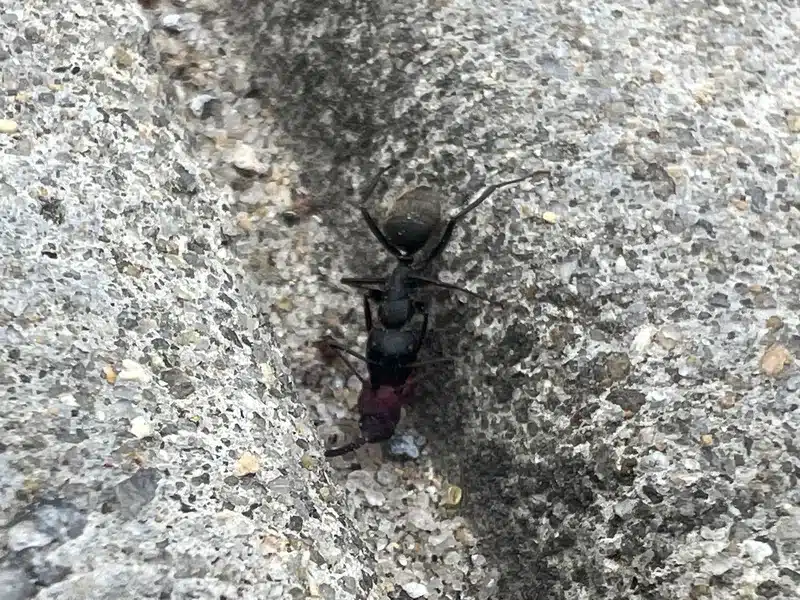Have you ever noticed ants carrying what looks like tiny bodies away from their trails? This behavior might seem strange, but it’s actually one of the most important things ants do to keep their colonies healthy. As a registered technician who has worked with pest issues throughout the DC metro area for several years, I’ve learned that understanding why do ants carry dead ants can actually help us locate hidden nests and develop better treatment strategies.
When investigating ant problems for customers, I’ve often discovered small piles of debris a few feet away from visible ant trails. At first, I wasn’t sure what these were, but after research and conversations with colleagues, I learned these “midden piles” often contain food fragments and dead ants - basically nature’s garbage dump. Spotting these piles has helped me pinpoint nest locations in more than a few cases.

What Is Necrophoresis in Ant Colonies
The scientific term for why do ants carry dead ants is called necrophoresis - literally meaning “corpse carrying.” This behavior was first studied extensively by scientist E.O. Wilson in 1958. Basically, it’s the transport of dead nest-mates and other dead insects out of the living areas of the colony.
The process is pretty straightforward but fascinating. When a worker ant encounters a dead colony member, it uses its antennae to inspect the body chemically. After confirming death, the ant picks up the corpse with its mandibles and carries it in a straight line away from the nest. This usually happens within an hour of death in most ant species found in the DC metro area.
What’s really interesting is how efficient this system is. Research shows that Argentine ants typically remove fresh corpses within just one hour, while harvester ants can detect and remove dead ants in minutes. This speed isn’t accidental - it’s critical for colony survival.
How Ants Detect Dead Ants: Chemical Signals That Trigger Removal
Understanding the chemical aspects of why do ants carry dead ants reveals just how sophisticated these tiny insects really are. Two main chemical processes tell ants when a colony member has died.
Death Fatty Acids
When ants die, specific fatty acids called oleic and linoleic acids start accumulating on their bodies within hours. These compounds form as triglycerides break down after death. Scientists have proven that applying these fatty acids to live ants or even random objects triggers the same removal behavior.
What’s especially clever is that the context matters. During nest maintenance, oleic acid-treated objects get taken to refuse piles. But when the colony is focused on foraging, those same objects might get brought toward the nest instead.
Loss of Life Signals
There’s another side to this chemical detection system. Living ants produce compounds called dolichodial and iridomyrmecin on their outer shell. These “life signals” disappear within about 60 minutes after death, and their absence actually triggers necrophoresis behavior. So ants use both the appearance of death chemicals and the disappearance of life chemicals to identify corpses.
What does the science say?
According to research published in PNAS, living ants continuously produce cuticular compounds that serve as “life signals.” When these compounds (dolichodial and iridomyrmecin) disappear within 60 minutes after death, it triggers the same necrophoresis response as the presence of death-associated fatty acids.
Additional studies have shown that applying oleic and linoleic acids to live ants or even random objects triggers identical removal behavior, proving these fatty acids are the primary death cues.
The dual-detection system (presence of death chemicals + absence of life chemicals) ensures extremely reliable corpse identification while minimizing false positives that could disrupt colony function.
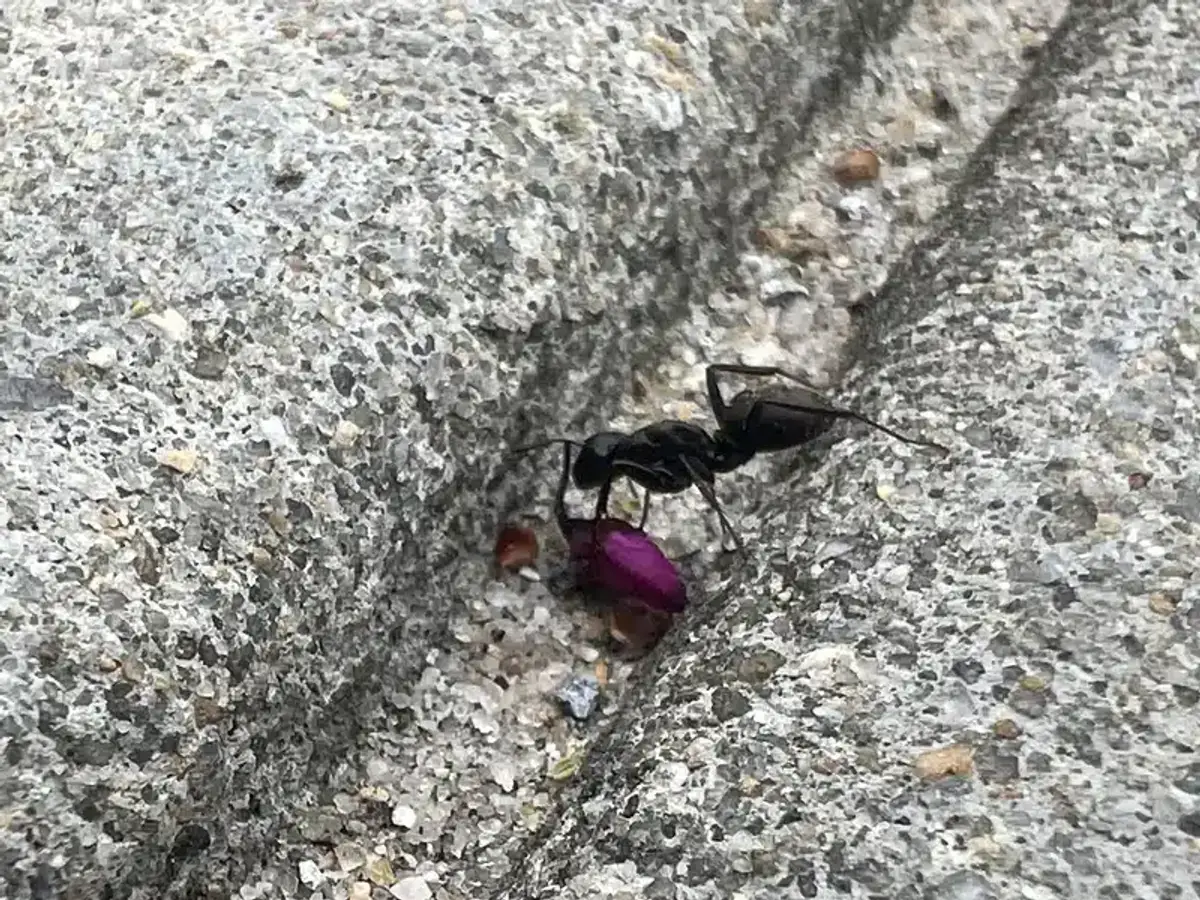
Specialized Undertaker Ants in the Colony
Not all ants handle corpse removal equally. Most colonies show what scientists call “age-based task allocation.” Middle-aged to older worker ants typically devote more time to handling dead bodies. These “undertaker ants” even have distinctive walking speeds and chemical profiles that set them apart from other workers.
Recent studies using tiny RFID tags on ants revealed something interesting. The ants that do most corpse work are usually “intermittent foragers” - workers that regularly move between the inside and outside of the nest. When disease risk increases, though, workers from all groups pitch in to speed up the removal process.
In my experience treating ant problems, disrupting these specialized workers can actually complicate treatment efforts. When you interfere with their normal removal patterns, it can push colonies to relocate, making complete elimination more difficult.
Corpse Removal Speed by Ant Species
| Species | Removal Time | Midden Location |
|---|---|---|
| Argentine Ants | Within 1 hour | Near moisture sources |
| Harvester Ants | Within minutes | Pebble-rich circles around nest |
| Carpenter Ants | 1-3 hours | Wood shavings near damp timbers |
| Pavement Ants | 30-60 minutes | ”Sand volcanoes” beside sidewalks |
Where Do Ants Carry Dead Ants: Midden Piles and Ant Graveyards
When people ask why do ants carry dead ants, they’re often really asking where these bodies end up. The answer is midden piles - designated refuse zones that serve as ant graveyards and garbage dumps.
These waste areas are typically located anywhere from 5 centimeters to over a meter from nest entrances, depending on the species. They accumulate not just corpses, but also discarded cocoons, waste food, and excavated soil. For example, harvester ants build pebble-rich middens in concentric circles around their nest opening.
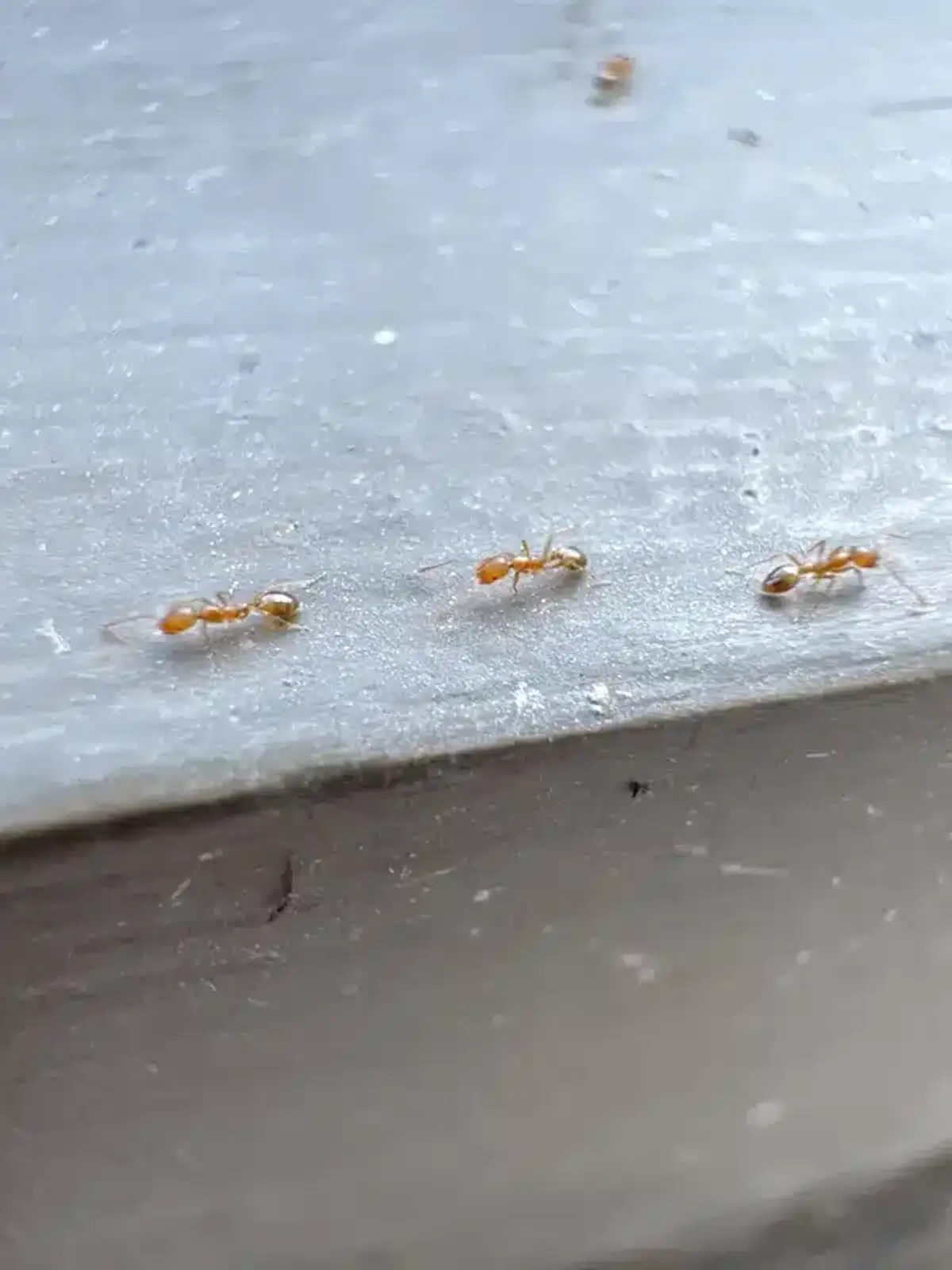
What’s really clever is that some ant species reuse these waste piles. Harvester ants leave scent trails on the pebbles in their middens that help returning foragers find their way home - basically turning their garbage into a navigation system.
Strategic Placement of Refuse Zones
Ants don’t just dump corpses randomly. Even in laboratory settings with no obvious landmarks, ants place corpse clusters strategically. They keep them at least 10 centimeters apart from each other and away from brood areas to minimize disease transmission between different parts of the colony.
During my inspections around the DC metro area, I’ve learned to look for specific patterns based on local species:
- Carpenter ants create middens of wood shavings mixed with corpses near damp timbers
- Odorous house ants build refuse piles under mulch or leaf litter close to building foundations
- Pavement ants make “sand volcanoes” with discarded wings and corpses beside sidewalks
Signs to Look For: Tracking Ant Graveyard Locations
- Foundation Perimeter: Check within 6 feet of your home’s foundation for small debris piles
- Moisture Sources: Look near water spigots, air conditioning units, and areas with poor drainage
- Protected Areas: Examine under mulch, leaf litter, potted plants, and deck overhangs
- Entry Points: Follow ant trails to find where they lead - midden piles are usually nearby
Why Ants Carry Dead Ants: Disease Prevention in Ant Colonies
The main reason why do ants carry dead ants comes down to disease prevention. Ants live in extremely high densities inside enclosed nests, which creates serious pathogen pressure. Dead bodies can quickly become breeding grounds for harmful bacteria and fungi that could wipe out entire colonies.
Experimental research proves just how critical this behavior is - when scientists prevented ants from removing corpses, worker mortality increased within days and overall colony survival dropped significantly. This shows that necrophoresis isn’t just tidiness - it’s essential for colony health.
This disease prevention system is part of what scientists call “social immunity.” Just like individual ants have immune systems, the whole colony works together through behaviors like grooming, producing antimicrobial secretions, and spatially separating waste to fight off diseases.

Using Dead Ant Behavior to Locate Hidden Colonies
Understanding why do ants carry dead ants has practical applications for pest control. When homeowners keep wiping away ants in their kitchen but the population keeps coming back, tracing these external graveyards can be key to finding and treating the actual colony.
Here’s what I look for during inspections:
- Distance from entry points: Midden piles are usually within one to two body lengths of main entrances for pavement ants
- Foundation cracks: Odorous house ants often place refuse along walls and foundation cracks
- Moisture areas: Most species locate middens near areas with consistent moisture but good drainage
- Protected locations: Look under mulch, leaf litter, or building overhangs
In situations where homeowners mention seeing strange piles of debris or dead ants outside, I know to take it seriously as a potential clue for where the colony is hiding. This detective work has helped me solve ant problems in bathrooms and other areas where the source wasn’t immediately obvious.
Case Study: How Small Debris Piles Led to a Major Discovery
During an inspection in Alexandria, a homeowner mentioned finding “weird little piles of stuff” near their deck. Initially, I wasn’t sure what to make of these scattered debris piles - they looked like random dirt and tiny fragments.
- The clue: Three small piles of debris 2-3 feet from the deck stairs
- What I found: Dead ant parts, discarded wings, and food fragments mixed with soil
- The revelation: Following the trail led directly to a massive carpenter ant colony in the deck support posts
- The result: Targeted treatment saved thousands in structural repairs
This experience taught me that ant graveyards are like breadcrumbs leading straight to the source of the problem.
Colony Health Indicators From Graveyard Analysis
The midden piles themselves can tell us a lot about colony health. High corpse-to-worker ratios or multiple scattered refuse areas often signal problems like disease outbreaks, pesticide exposure, or even queen death (which leads to poor brood care and excess mortality).
On the flip side, neat and well-organized middens with fast removal times usually indicate a healthy, well-functioning colony with robust social organization. This information helps me determine the best treatment approach and predict how challenging an infestation might be to eliminate.
How Treatment Disrupts Necrophoresis Behavior
When we treat ant colonies, understanding why do ants carry dead ants becomes crucial for effective control. Blocking nest entrances slows down corpse removal, which actually amplifies pathogen load inside the nest. This can increase the effectiveness of certain biological control agents.
However, too much interference can backfire. Excessive disruption of normal colony functions may cause species like odorous house ants to create satellite nests, spreading the problem rather than solving it. That’s why our approach focuses on using targeted treatments that work with ant behavior rather than against it.
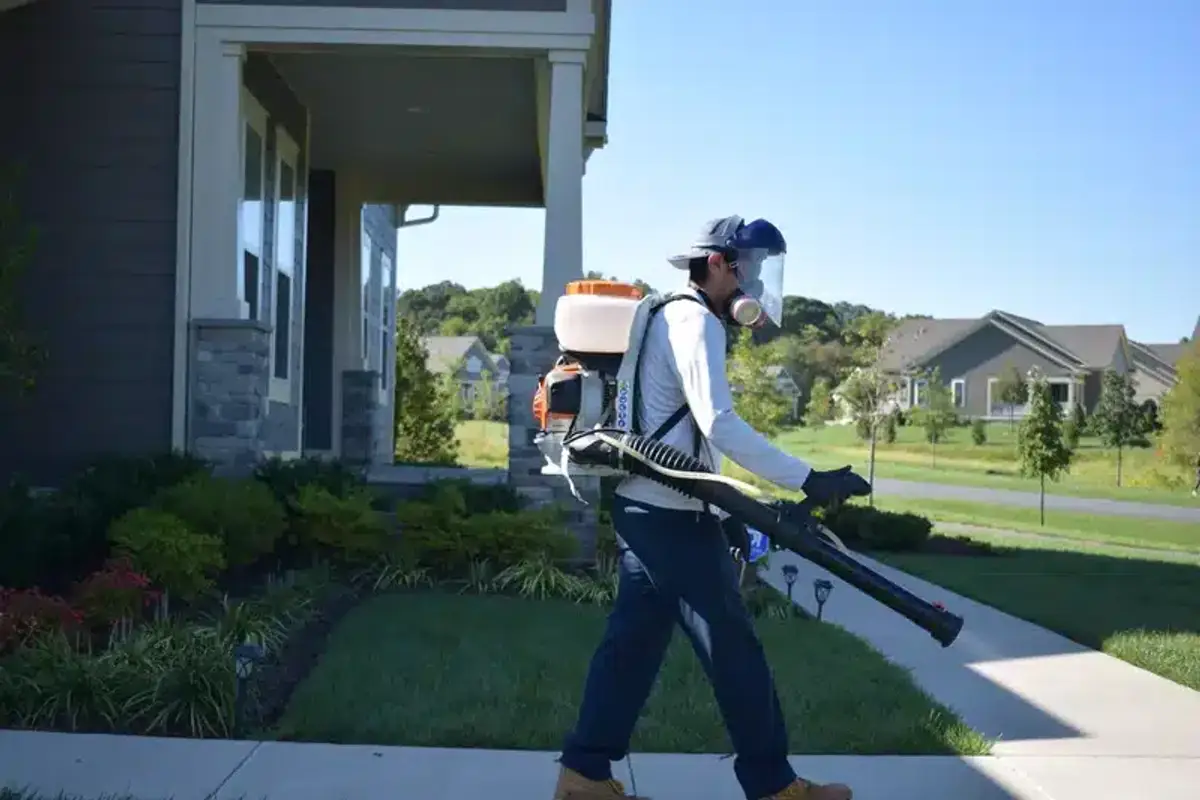
There’s also promising research into using semiochemicals that mimic death cues to recruit undertaker ants to move toxic baits deeper into colonies. This type of innovative approach shows how understanding natural ant behavior can lead to more effective and targeted control methods.
Sophisticated Social Organization in Action
The question of why do ants carry dead ants really showcases how sophisticated these tiny insects are. Necrophoresis demonstrates what scientists call “stigmergy” - where workers modify their environment in ways that guide future actions by other workers.
This behavior integrates with trail pheromones, nest architecture, and age-based task allocation to create a complex colony-level sanitation system. It emerges from simple individual rules tied to chemical thresholds, but the result is remarkably effective disease management at the group level.
In my work throughout the DC metro area, I’ve come to appreciate how corpse removal shows that ants understand disease control and sanitation principles better than many people give them credit for. It’s convinced me that observing these behaviors isn’t just biology trivia - it’s a practical skill for pest professionals.
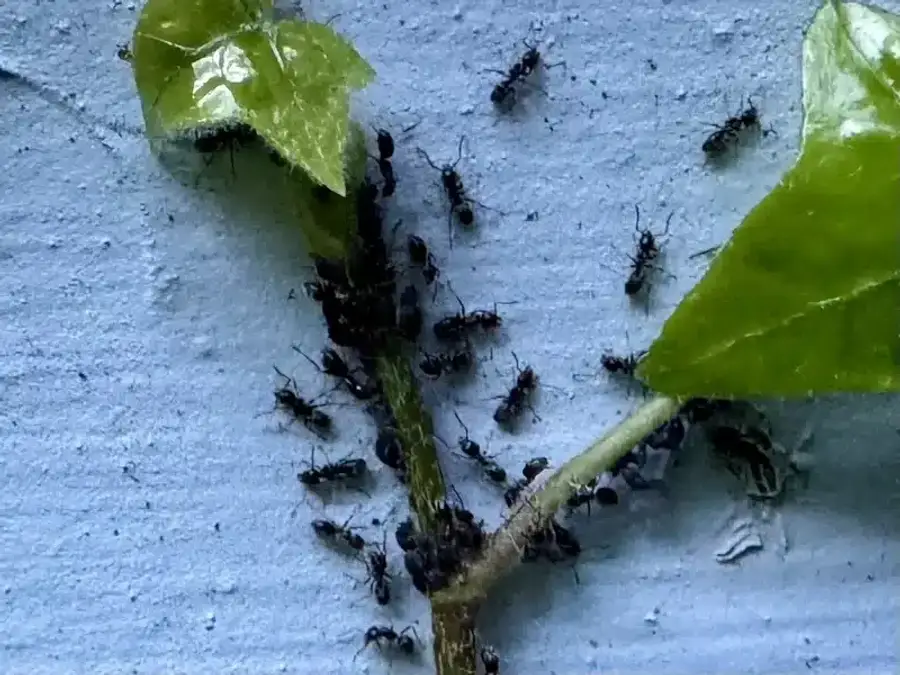
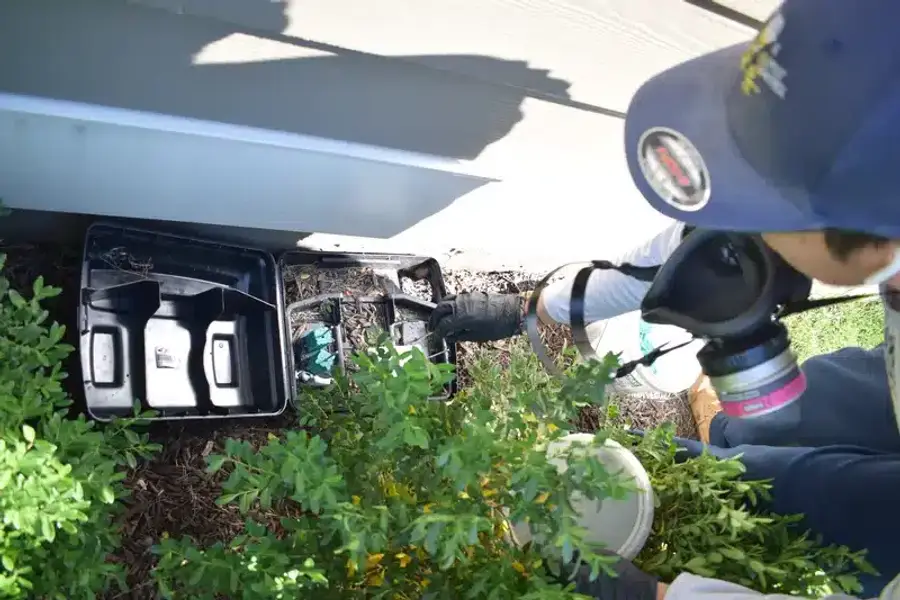
Professional Ant Control Strategies
When dealing with persistent ant problems, understanding why do ants carry dead ants informs our treatment approach. We start with thorough inspections that include looking for midden piles and corpse removal patterns. This helps us locate the actual colony rather than just treating visible trails.
Our treatment process typically involves:
- Initial assessment: Identifying species and locating midden piles
- Targeted application: Using non-repellent materials that work with ant social behavior
- Follow-up monitoring: Checking how treatment affects normal hygiene patterns
- Adjustment: Modifying approach based on colony response
For customers dealing with recurring ant issues, we often recommend our comprehensive programs that account for seasonal changes in ant behavior. Sugar ant elimination and other targeted approaches work best when they consider the full scope of colony behavior, including waste management patterns.
Understanding ant behavior has also taught me that finding ant graveyards means you’re close to the main colony. When customers mention seeing dead ants in specific outdoor areas, it’s often one of the best clues for locating hidden nests that might be feeding indoor ant problems.
The sophisticated nature of ant corpse removal shows why effective control requires more than just surface treatments. By working with professional technicians who understand these behaviors, homeowners can achieve lasting results rather than just temporary relief. If you’re dealing with persistent ant problems that keep coming back despite your efforts, the solution likely involves understanding and addressing the colony’s complete behavioral patterns, including their remarkable waste management system.
For expert help with ant control that considers the full scope of colony behavior, call us at 703-683-2000 or email info@bettertermite.com. Our registered technicians understand how ant hygiene behaviors can guide effective treatment strategies throughout the DC metro area.
Frequently Asked Questions
Why do ants carry dead ants away from their nest?
+
Ants carry dead ants away from their nest to prevent disease spread within the colony. This behavior, called necrophoresis, removes potential sources of harmful bacteria and fungi that could kill the entire colony. Dead bodies are taken to designated refuse areas called midden piles, usually located several centimeters to over a meter from the main nest.
How do ants know when another ant is dead?
+
Ants detect death through chemical signals. When an ant dies, fatty acids like oleic and linoleic acid accumulate on its body within hours. At the same time, “life signals” like dolichodial and iridomyrmecin disappear from the ant's outer shell within 60 minutes. This combination of appearing death chemicals and disappearing life chemicals tells other ants that removal is needed.
What are ant midden piles and how can they help locate nests?
+
Ant midden piles are refuse zones where ants deposit dead colony members, waste food, and other debris. They're typically located within one to two body lengths of nest entrances for most species. Finding these “ant graveyards” can help pinpoint hidden colony locations, especially when dealing with recurring indoor ant problems.
Do all worker ants remove dead bodies or just certain ones?
+
Most colonies have specialized “undertaker ants” - typically middle-aged to older workers who handle most corpse removal. These ants are often “intermittent foragers” that regularly move between inside and outside the nest. However, when disease risk increases, workers from all groups will help speed up the removal process.
How does understanding ant corpse removal help with pest control?
+
Understanding necrophoresis helps pest control professionals locate hidden nests by following corpse removal patterns and finding midden piles. It also informs treatment strategies - knowing how colonies respond to disrupted hygiene behaviors helps determine the most effective approach for complete elimination rather than just surface treatment.
What does it mean if I find multiple ant graveyards around my property?
+
Multiple scattered midden piles often indicate either multiple colonies or a stressed colony dealing with high mortality from disease, pesticide exposure, or other problems. This can signal a more serious infestation that requires professional assessment to determine the best treatment approach.
How quickly do ants remove dead colony members?
+
Most ant species remove dead colony members very quickly - Argentine ants typically remove fresh corpses within one hour of death, while harvester ants may take just minutes to detect and remove bodies. This speed is critical for preventing disease outbreaks in the high-density environment of ant colonies.
Can disrupting ant corpse removal patterns affect treatment success?
+
Yes, disrupting normal corpse removal can complicate treatment efforts. While blocking nest entrances can slow removal and increase pathogen pressure inside the nest, excessive interference may cause some species to create satellite nests, spreading the problem. Effective treatment works with ant behavior rather than against it.
With five years of hands-on experience in the pest control industry, George Schulz is a registered technician with the Virginia Pest Management Association and a proud third-generation professional in a family business that's been protecting homes for over 57 years. He manages and trains a team of service pros while also leading internal research efforts—recently spearheading a deep-dive review of thousands of documents on pest control materials to hand-pick the most kid and pet friendly, most effective solutions tailored specifically for homes in the DC metro area.
